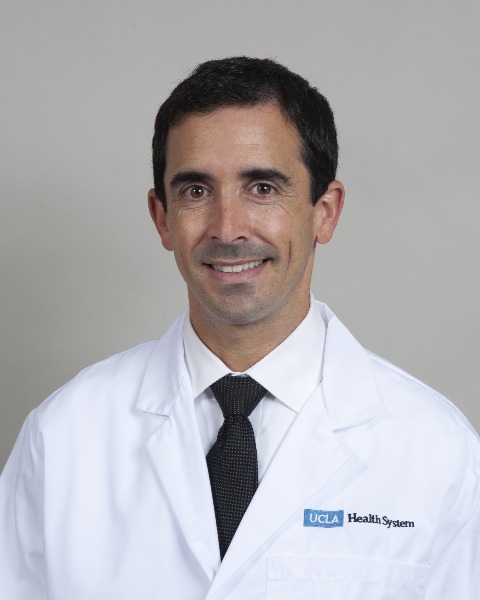Back
Poster, Podium & Video Sessions
Podium
PD25: Health Services Research: Practice Patterns, Quality of Life and Shared Decision Making II
PD25-02: Utilization of eConsult and Clinical Integration to Maximize Access to Urologic Care in the Safety Net: Outcomes from the Largest eConsult Experience in the United States
Saturday, May 14, 2022
9:40 AM – 9:50 AM
Location: Room 244
Jonathan Bergman*, Katherine Fero, Jamal Nabhani, Jeremy Blumberg, Kiran Gollapudi, Stanley Frencher, Paul Giboney, Los Angeles, CA

Jonathan Bergman, MD
Associate Professor of Urology & Family Medicine
LAC-DHS ; VA ; UCLA
Podium Presenter(s)
Introduction: Access to timely urologic care is a particular challenge in Safety Net systems with limited resources, challenging our ability to provide quality care for underserved and historically disadvantaged populations. In an effort to maximize urologic resources, the Los Angeles County Department of Health Services (LAC-DHS)—the second-largest public health care system in the United States—pursued clinical integration by instituting primary care empanelment, eConsult, and jointly derived Expected Practices, which are population-specific clinical algorithms for managing common urologic conditions. The eConsult platform allows forwarding of eConsults to other urologists throughout LAC-DHS to provide access to subspecialty resources (e.g., urodynamics) or to more timely surgical care. Our objective was to assess how eConsult, as part of a clinical integration effort, facilitated urologic care in the Safety Net.
Methods: We prospectively assessed eConsult use in LAC-DHS from January 2018 until October 2021. We measured eConsult volume, final clinical access (face-to-face visit versus a “non-face-to-face specialty-care touch [NFTFSCT],” resolved with input from a urologist but without a face-to-face urology visit), forwarding of consults for sub-specialty care or expedited access, reviewer response time, and proportion of patients seen within the intended time frame. We also assessed referral diagnosis as specified by the referring primary care provider.
Results: Of the 31,342 eConsults sent to urology, 28% were resolved with a NFTFSCT, while 72% necessitated a face-to-face visit. Forwarding of eConsults to another urologist for either subspecialty expertise or timeliness of care occurred in 8% of cases. Average response time was 1.8 days, and 91% of patients were seen within the intended time frame. The four most common diagnoses were lower urinary tract symptoms (20%), urolithiasis (20%), hematuria (18%), and urologic malignancy (16%).
Conclusions: In the largest reported eConsult experience in the United States, clinical integration allowed eConsult to facilitate care and to ensure patients were seen at the right time, in the right location, by the right provider. Not only was access to urology clinic excellent, urologists extended care through NFTFSCT and by collaboratively building population-specific Expected Practices. When used as part of a clinically integrated system, eConsult maximizes urologists’ ability to care for large populations of individuals.
Source of Funding: LAC-DHS
Methods: We prospectively assessed eConsult use in LAC-DHS from January 2018 until October 2021. We measured eConsult volume, final clinical access (face-to-face visit versus a “non-face-to-face specialty-care touch [NFTFSCT],” resolved with input from a urologist but without a face-to-face urology visit), forwarding of consults for sub-specialty care or expedited access, reviewer response time, and proportion of patients seen within the intended time frame. We also assessed referral diagnosis as specified by the referring primary care provider.
Results: Of the 31,342 eConsults sent to urology, 28% were resolved with a NFTFSCT, while 72% necessitated a face-to-face visit. Forwarding of eConsults to another urologist for either subspecialty expertise or timeliness of care occurred in 8% of cases. Average response time was 1.8 days, and 91% of patients were seen within the intended time frame. The four most common diagnoses were lower urinary tract symptoms (20%), urolithiasis (20%), hematuria (18%), and urologic malignancy (16%).
Conclusions: In the largest reported eConsult experience in the United States, clinical integration allowed eConsult to facilitate care and to ensure patients were seen at the right time, in the right location, by the right provider. Not only was access to urology clinic excellent, urologists extended care through NFTFSCT and by collaboratively building population-specific Expected Practices. When used as part of a clinically integrated system, eConsult maximizes urologists’ ability to care for large populations of individuals.
Source of Funding: LAC-DHS

.jpg)
.jpg)